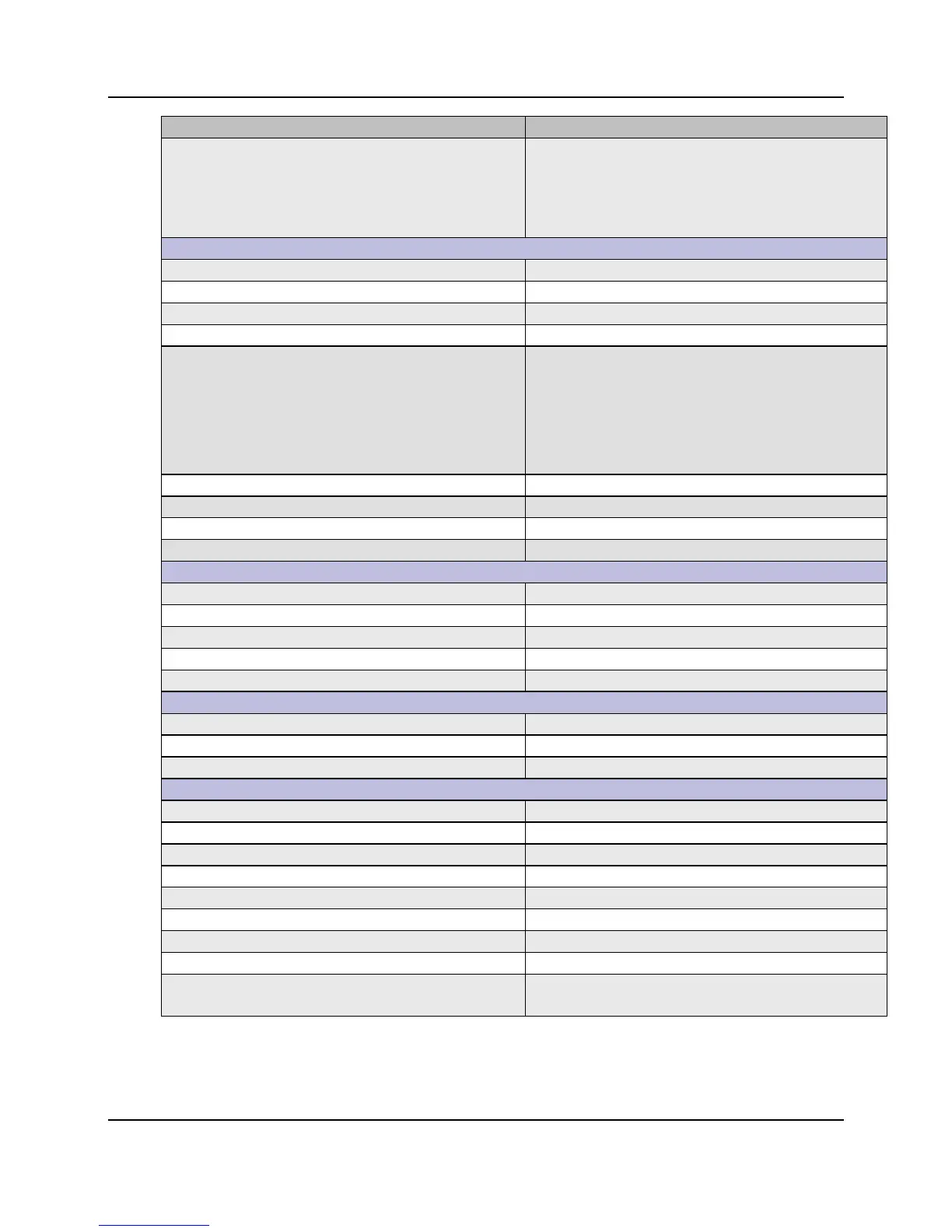219
Proprietary Information: Not for use or disclosure except by written agreement with Calix.
© Calix. All Rights Reserved.
Maximum throughput: IP payload throughput Payload Throughput = Efficiency * Net bit rate
Where the physical layer net bit rate (the wire bit rate)
depends on the Ethernet physical layer standard, and may be
10 Mbit/s, 100 Mbit/s, 1 Gbit/s or 10 Gbit/s. Maximum
throughput for 100BASE-TX Ethernet is consequently 97.53
Mbit/s without 802.1Q, and 97.28 Mbit/s with 802.1Q.
ERPS/G.8032v2 rings per E7-2 system
ERPS/G.8032v2 rings per E7-20 system
ERPS/G.8032v2 rings per VDSL card
ERPS/G.8032v2 domain per E7 interface
“units” per ERPS/G.8032v2 ring 32
—or—
16 (for E7-2 MC nodes with VDSL2-based MCCs)
This number counts each E7-20 SCP card located in the ring
as 1 unit, and each E7-2 card located in the ring as 1 unit,
whether in a dual- or single-card E7 shelf. This number does
not include devices or E7s subtended from the ring, including
the MCE shelves of an E7-2 modular chassis (MC) node.
Interconnected rings for a “chain of ERPS rings”
Unit count per E7-20 SCP card
1 (up to 2 units per E7-20 shelf)
Unit count per E7-2 line card
1 (up to 2 units per E7-2 shelf)
Link Aggregation Groups per shelf using GE ports
Active ports per Link Aggregation Group using GE ports
Ports per Link Aggregation Group using GE ports
Link Aggregation Groups per shelf using 10GE ports
Ports per Link Aggregation Group using 10GE ports
Per card with RSTP protection
Profiles and Templates per E7
Policy Map Match entries for a VDSL card
Policy Map Match entries for all other card types
Class Rules per Class Map
Subscriber bandwidth profiles (GPON and VDSL together)
MVR profiles 16 at the system level
(1 video provider per MVR profile)

